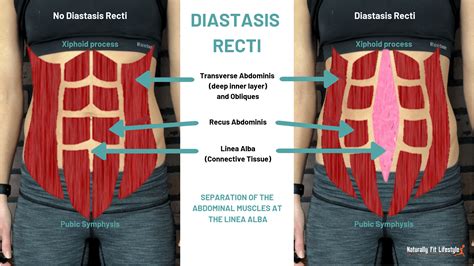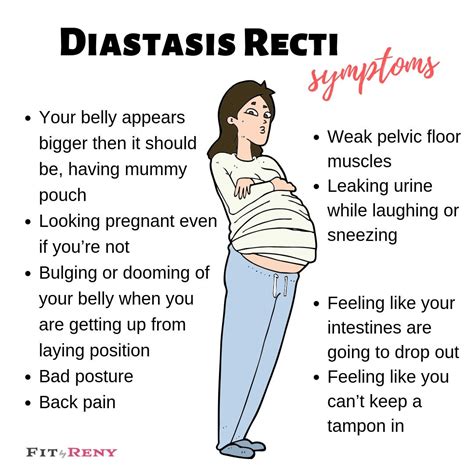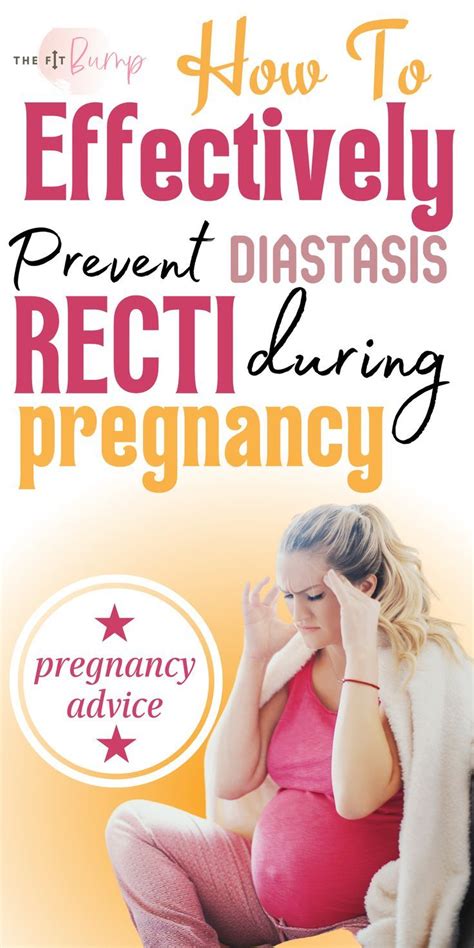Intro
Learn to fix diastasis recti with exercises, physical therapy, and nutrition tips, repairing abdominal separation and strengthening core muscles for a healthier post-pregnancy body.
The topic of diastasis recti has gained significant attention in recent years, particularly among new mothers and fitness enthusiasts. Diastasis recti, also known as abdominal separation, occurs when the rectus abdominis muscle splits apart, causing a gap or bulge in the abdominal wall. This condition can be caused by a variety of factors, including pregnancy, obesity, and heavy lifting. In this article, we will delve into the world of diastasis recti, exploring its causes, symptoms, and most importantly, ways to fix it.
Diastasis recti can have a significant impact on a person's quality of life, causing discomfort, pain, and embarrassment. Many people who suffer from diastasis recti feel self-conscious about their appearance, avoiding certain activities or clothing that may accentuate the bulge. However, with the right approach and treatment, it is possible to fix diastasis recti and regain a strong, flat stomach. Whether you are a new mother looking to restore your pre-pregnancy body or an individual seeking to improve your overall core strength, this article will provide you with the necessary information and guidance to achieve your goals.
The importance of addressing diastasis recti cannot be overstated. If left untreated, this condition can lead to a range of complications, including back pain, pelvic floor dysfunction, and hernias. Furthermore, diastasis recti can also affect a person's mental health, causing low self-esteem and anxiety. By understanding the causes and symptoms of diastasis recti, individuals can take proactive steps to prevent and treat this condition, improving their overall health and wellbeing.
Understanding Diastasis Recti

Causes of Diastasis Recti
The causes of diastasis recti are multifaceted and can vary from person to person. Some of the most common causes of diastasis recti include: * Pregnancy: The growing uterus can put pressure on the abdominal wall, causing the rectus abdominis muscle to separate. * Obesity: Excess weight can put strain on the abdominal muscles, leading to separation. * Heavy lifting: Lifting heavy objects can cause the abdominal muscles to tear, leading to diastasis recti. * Genetics: Some people may be more prone to diastasis recti due to their genetic makeup. * Age: Diastasis recti can occur at any age, but it is more common in older adults.Symptoms of Diastasis Recti

Diagnosing Diastasis Recti
Diagnosing diastasis recti typically involves a physical examination and medical history. A healthcare professional may use a variety of techniques to diagnose diastasis recti, including: * Palpation: A healthcare professional may use their fingers to feel the abdominal wall and check for any gaps or bulges. * Imaging tests: Imaging tests such as ultrasound or MRI may be used to confirm the diagnosis. * Physical examination: A healthcare professional may perform a physical examination to check for any signs of diastasis recti, such as a bulge or gap in the abdominal wall.Treatment Options for Diastasis Recti

Exercises for Diastasis Recti
Exercises can play an important role in treating diastasis recti. Some exercises that can help to improve diastasis recti include: * Pelvic tilts: Pelvic tilts can help to strengthen the core muscles and improve diastasis recti. * Bridges: Bridges can help to strengthen the glutes and core muscles, improving diastasis recti. * Planks: Planks can help to strengthen the core muscles and improve posture. * Deep breathing exercises: Deep breathing exercises can help to strengthen the transverse abdominis muscle, improving diastasis recti.Preventing Diastasis Recti

Core Strengthening Exercises
Core strengthening exercises can play an important role in preventing diastasis recti. Some exercises that can help to strengthen the core muscles include: * Planks * Pelvic tilts * Bridges * Deep breathing exercises * Russian twistsConclusion and Next Steps

We invite you to share your thoughts and experiences with diastasis recti in the comments below. Have you struggled with diastasis recti? What treatment options have you found to be most effective? Share your story and help others who may be struggling with this condition.
What is diastasis recti?
+Diastasis recti is a condition characterized by the separation of the rectus abdominis muscle, which runs from the ribcage to the pubic bone.
What are the symptoms of diastasis recti?
+The symptoms of diastasis recti can vary from person to person, but common symptoms include a bulge or gap in the abdominal wall, back pain, and pelvic floor dysfunction.
How can I prevent diastasis recti?
+Preventing diastasis recti is possible by making lifestyle changes and taking proactive steps to strengthen the core muscles, such as maintaining a healthy weight, avoiding heavy lifting, and improving posture.
